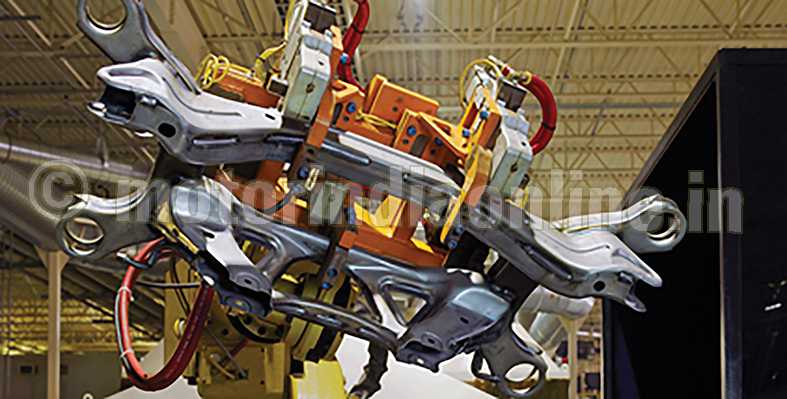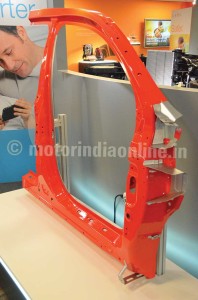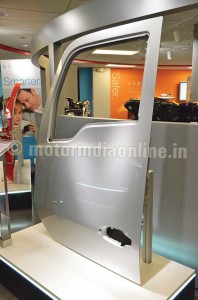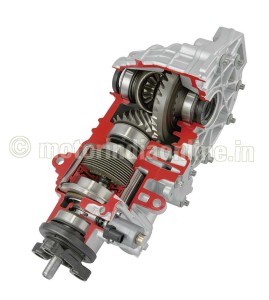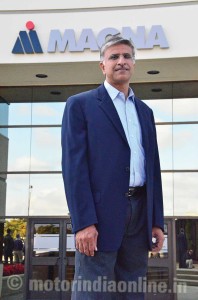Two new projects coming up in Gujarat
Leading global automotive supplier Magna International Inc. has announced the setting up of two new facilities in the Sanand region of Gujarat as part of its plans to expand its global engineering and manufacturing footprint. As a world leader, Magna designs, develops and manufactures automotive systems, modules and components, and engineers and assembles complete vehicles, primarily for the OEM market, catering to all segments, including cars, light trucks and heavy commercial vehicles. The company has its strong presence in India with a total of 11 manufacturing locations, including the two new units and four engineering centres, employing over 1,600 people across its facilities.
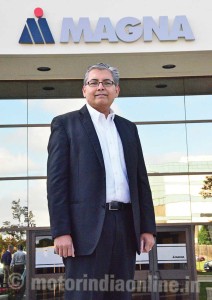
While the new plants are coming up as a result of business awards for vehicle programs built off global-platforms, they also help Magna stay part of the Indian automotive sector growth story.
At one of the new Sanand facilities, Magna will make complete seat systems for a leading automaker. The 215,000 sq. ft. plant will employ approximately 200 people and is expected to begin volume production in 2015.
At Magna’s second new facility in Sanand, the company will manufacture body and chassis systems for multiple customers. The 356,000 sq. ft. plant will employ approximately 400 people and also expects to begin volume production in 2015.
“Magna’s growth in markets such as India reflect our customers’ need for world-class, innovative suppliers,” said Mr. Jim Tobin, Chief Marketing Officer and President of Magna Asia. “With almost a million square feet of capacity now installed in India, we believe we are extremely well-positioned to support the increasing vehicle production forecast for the Indian automotive industry.”
The upcoming facilities further strengthen Magna’s presence in India which already has the following facilities:
• A 279,000 sq. ft. body and chassis plant in Pune which performs blanking, stamping, forming, as well as welding and assembly on programs for customers such as General Motors, Volkswagen, Tata Motors and Mahindra & Mahindra.
• A 225,000 sq. ft. body and chassis plant in Chennai which performs stamping, welding and assembly for customers such as Ford and Nissan in India, as well as customers outside India.
• A seating design and engineering center in Pune.
• A vacuum pump manufacturing facility in Bangalore, serving customers such as Maruti Suzuki, Honda Cars India, Mahindra & Mahindra, Renault-Nissan and Tata Motors.
In addition, Magna is able to provide its customers in India broad product and process expertise on a local basis, as well as global program co-ordination through its body and chassis engineering centre in Bangalore, seating and full-vehicle engineering centres in Pune, and a latch and closure engineering centre in Chennai.
Talking about Magna‘s focus on India, Mr. Deval Desai, Executive Director and Country Manager, India, and Executive Director, Strategy & Planning, Magna International, said: “The initiatives taken by the Indian government in terms of infrastructure development and better supply of power point to a very good future for India. We expect the Indian automotive market to be very positive in the coming years and are also particularly interested in the huge export opportunity.”
In another recent move highlighting the company’s growing interest on India, Magna had partnered Tata AutoComp Systems to offer seating systems for truck and bus manufacturers in the country. Mr. Desai feels the CV market will also be an area of priority for Magna in India. “We will also focus on the commercial vehicle market as we see a huge opportunity in the segment. There is a clear need to have new trucks in India since most trucks that are currently on Indian roads are outdated. The Indian CV market is very important for us and we would definitely like to be part of the growth in the segment in the coming years.”
Mr. Desai was addressing a select group of journalists from India who had travelled to the U.S. on a visit to Magna’s U.S. headquarters at Troy, Michigan. Mr. Swamy Kotagiri, Chief Technology Officer, Magna International, also addressed the group, presenting a background of Magna’s global leadership in technology and innovation, in addition to giving details about some of the latest developments in technology at the company, including autonomous driving and the use of alternative materials in vehicle design.
The journalists were also walked around Magna’s innovation centre which showcased in depth as to why the company is a global leader in many areas of system and component development in today’s highly-competitive automotive supplier industry. Rounding off the day, the group had an adventurous off-roading session to get a first-hand understanding of the breathtaking performance of Magna’s powertrain systems.
Magna International quick facts• 317 manufacturing operations • 83 product development, engineering and sales centres • Present in 29 countries • Product capabilities: Body | Chassis | Interior | Exterior | Seating | Powertrain | Electronic | Vision | Closure, roof systems and modules | Fuel and battery systems | Complete vehicle engineering and contract manufacturing |
Interview with Swamy Kotagiri, Chief Technology Officer, Magna InternationalIn an exclusive interview to MOTORINDIA, Mr. Swamy Kotagiri speaks about the prospects of autonomous driving, Magna’s capabilities in the field and the growing popularity of alternative materials to steel, like aluminium and composites. Excerpts: What do you think is the future of autonomous driving? What are the aspects involved in making it a commercially viable concept? Autonomous driving is a pathway into the future. If we look at all the technologies available today in this field, like the various driver assist features, autonomous driving is definitely possible from a technical point of view. But, considering other aspects such as infrastructure, pedestrians and the proliferation of technology across the spectrum of vehicles on roads, these are the obstacles which need to be overcome for autonomous vehicles to become practically viable. The way we look at it is (at Magna), if the technology is available and people get used to it, the legislation will come. If we can make any product smarter and more efficient and reduce exposure to danger, we will certainly do it. How important and feasible do you think autonomous driving for trucks would be? Trucks have a different need when compared to passenger cars. Trucks, especially the larger ones, are extremely interested in good fuel efficiency and also knowing the conditions ahead in their attempt for better planning. The technologies that give them the required end results become a lot more important, so both vehicle-to-vehicle (V2V) and vehicle-to-infrastructure (V2I) communication are important for trucks. For trucks, the focus will be more on functional needs, while for passenger cars it will be on comfort and connectivity. So the solutions that Magna offers are for both passenger cars and commercial vehicles? Absolutely. For example, the stereoscopic cameras we offer, something similar to optical sensors, can be used in both passenger cars and commercial vehicles. We also offer solutions such as lane keep assist, adaptive cruise control and object detection which can be used in V2V communication in trucks for platooning and a number of other features. Who are the vehicle makers you work with for these solutions? Thanks to our strong product portfolio and also the range of solutions we offer in this field, we have had wide interactions with leading global OEMs, including Fiat Chrysler, GM, Ford, Daimler, VW, Honda, Nissan and many others. What about the feasibility of autonomous driving in a country like India? In India, the biggest bottleneck is infrastructure. People have very good buying power, the acceptance is there; customers are open-minded and willing to adopt new technology; and the knowledge base is present to get the technology implemented, more so when it comes to electronics. The first thing India needs to work on is infrastructure, and once we get across that, a lot of these solutions will start proliferating very quickly. Moving on to the material side, we see good growth in the use of aluminium. What are the trends you foresee? Can we also expect an increase in use of composite material? The use of aluminium has increased with time, and it also varies depending on the vehicle segment. The proliferation of aluminium into the C-segment vehicles and above will definitely be the trend over the next five to 10 years. Broadly speaking, the contribution of aluminium per vehicle could reach anywhere from 25 to 40 per cent depending on the vehicle class, but that is in the context of the kind of steel available today. If we come up with new alloys of steel, this number might change, especially because since the mid-90s, the spectrum of steels used in different applications and their strengths have changed significantly. Over the next decade, steel will still be dominant, but aluminium will start showing up predominantly in many places. Other materials like composites, magnesium and the more exotic ones are entering the premium segment and niche vehicles with the price and geo-political supply likely to determine how much they will be used in future. We do have different types of composites like biodegradable composites, short glass fibre and long glass fibre, and they will all play a bigger role in vehicle design in the coming years. Fibre-reinforced plastic (FRP) will also be involved depending on the design and weight-splitting, driven by certain advantages like lowering the centre of gravity of the vehicle. How about the acceptance of these alternative materials in the emerging markets like India and China? From a material perspective, I believe the A and B segments of vehicles will continue to remain price sensitive. So it will be the right combination of steel and aluminium depending on the application which will be used, more so in the emerging. This is where Magna’s multi-material concept vehicle is a prime example of what the future holds, especially in the A and B segments. What solutions does Magna offer on the material front for trucks and buses? And, do you work with anyone in the Indian commercial vehicle market on these lines? We provide significant content on Peterbilt, Kenworth, Freightliner, Daimler and other trucks in North America. For instance, most of the modules in the Paccar truck cabs are made by Magna. Apart from these customers, we work with many other leading truck brands globally. In India, we haven’t started working with any truck or bus OEM yet but we are open to it. The reason is not mainly the cost, but it is the construction of trucks and the way it is done in India at present. Can we provide parts, yes. But the vehicle architecture doesn’t require the complexity at the particular value at the moment. We always talk about our experience and what we offer here in North America, and if we can bring value to the table in providing any of the products we have, we certainly want to. |
